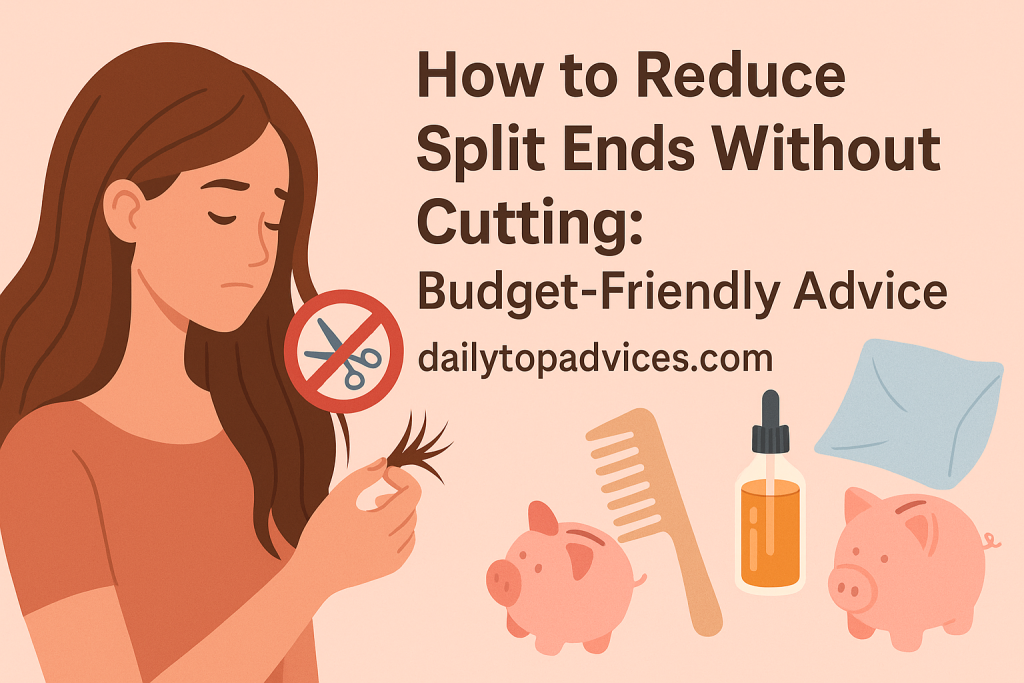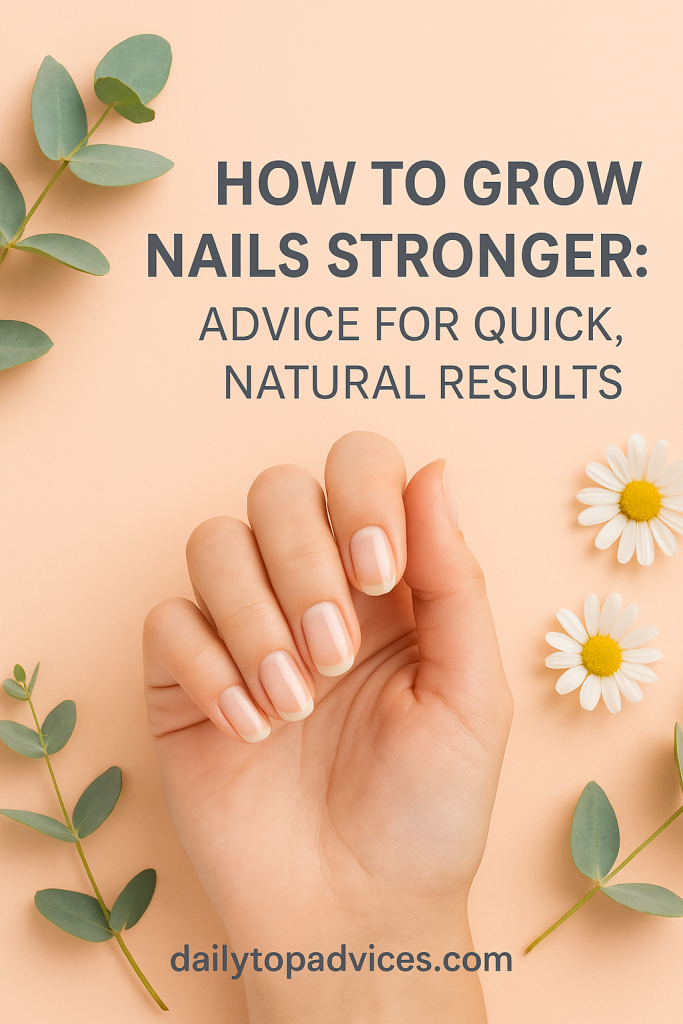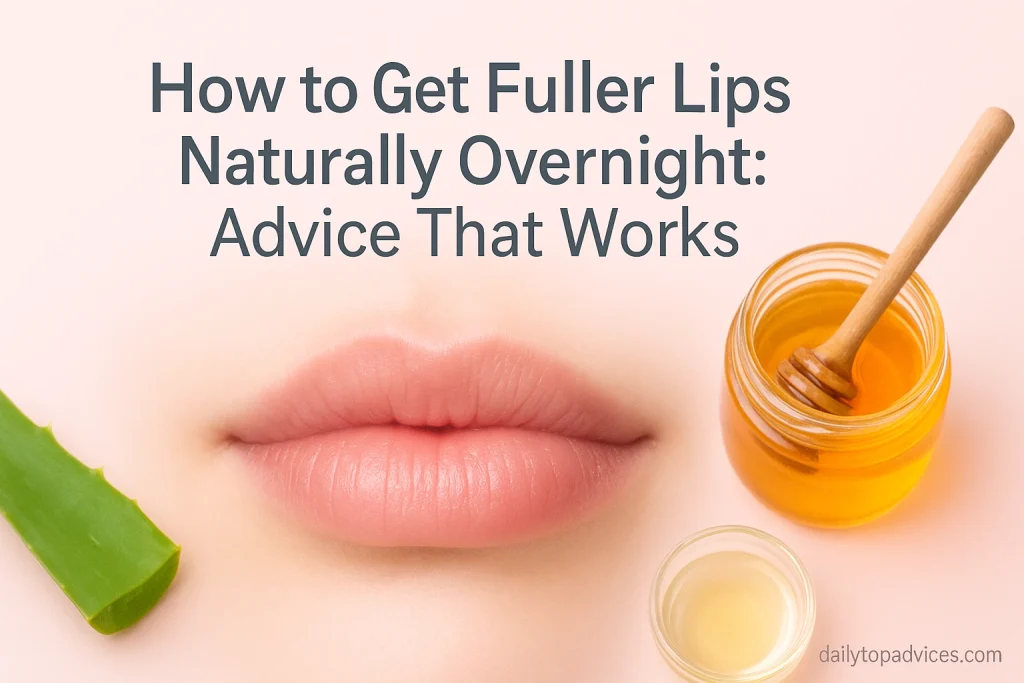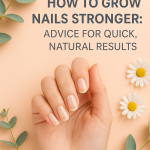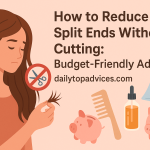How to Reduce Split Ends Without Cutting: Advice Budget-Friendly
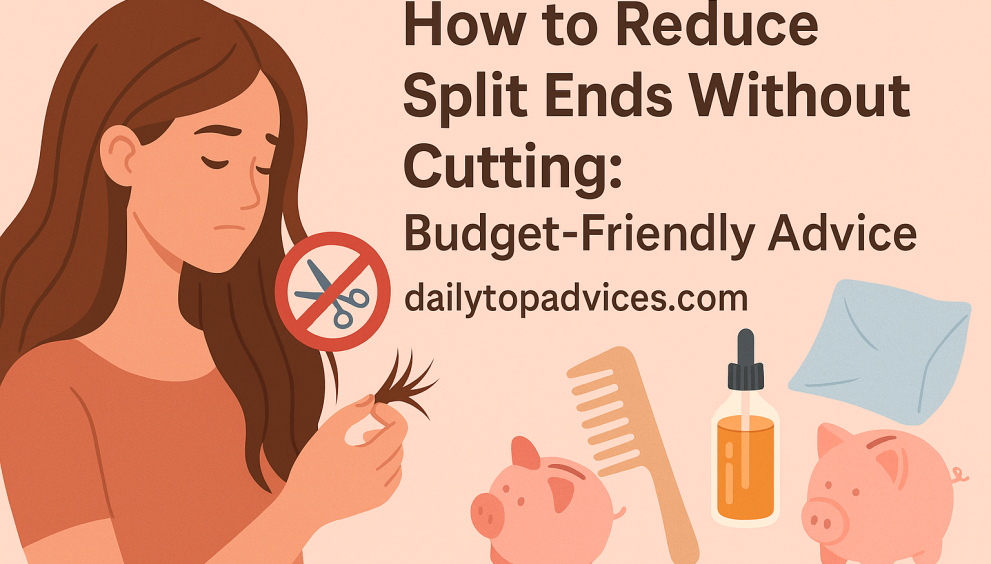
Understanding Split Ends and Why They Happen
If your hair feels frizzy, rough, and the ends look uneven, you’re likely dealing with split ends, a common sign of hair shaft damage. Split ends occur when the protective outer layer of the hair, the cuticle, wears away due to dryness, friction, or chemical exposure. According to the American Academy of Dermatology, heat styling and over-brushing are leading causes of cuticle breakdown in both men and women.
The average hair strand grows about half an inch per month, but constant damage can make it appear stagnant or shorter over time. That’s why many people search for how to reduce split ends without cutting, aiming to restore smoothness without trimming length. Fortunately, with consistent care, moisture retention, and protective habits, you can significantly minimize damage and help your ends look healthier between salon visits.
Hydration Is Key: Deep Conditioning and Moisture Lock-In
The foundation of how to reduce split ends without cutting lies in hydration. When hair lacks moisture, it becomes brittle and more prone to breakage. Regular deep-conditioning treatments help infuse essential nutrients and lipids that smooth and reinforce the cuticle layer.
Dermatologists from the Mayo Clinic emphasize that dry hair is the first indicator of underlying scalp dehydration or environmental exposure, such as excessive sun and chlorine. To combat this, use a deep-conditioning mask once a week containing ingredients like argan oil, shea butter, or coconut oil. These components form a protective barrier around the strand, sealing moisture and reducing friction.
For budget-friendly options, DIY remedies work wonders: blend 1 tablespoon of olive oil with 1 tablespoon of honey and apply to damp hair for 20 minutes before rinsing. This natural conditioner restores softness and helps reduce visible split ends.
Limit Heat Styling and Use Protective Serums
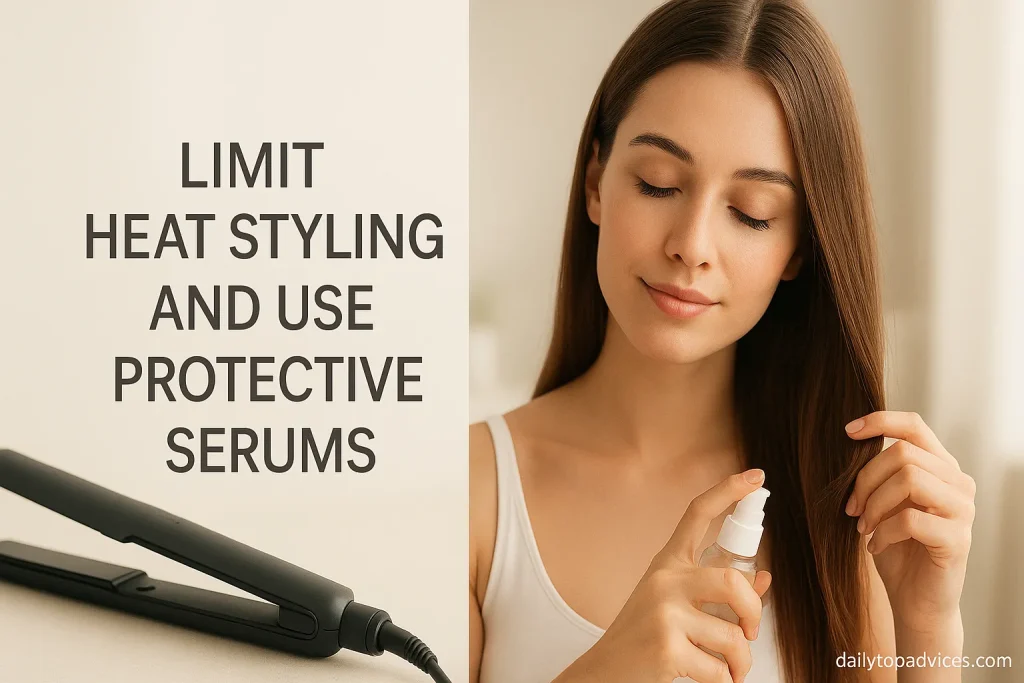
Excessive heat is one of the biggest enemies of healthy hair. Flat irons, curling wands, and blow dryers can reach temperatures over 400°F (204°C), enough to strip natural oils and denature keratin proteins in your strands. Studies cited by the Journal of Cosmetic Science show that high-temperature styling can reduce hair elasticity by up to 50 % in just one session.
To practice how to reduce split ends without cutting, minimize heat exposure whenever possible. Try air-drying your hair partially before using a dryer, and always apply a heat protectant serum or spray. Silicone-based protectants (like dimethicone) create a thin shield that reduces water loss and heat transfer.
For budget-friendly protection, consider using a few drops of argan oil or grape seed oil on damp hair. These oils naturally repel moisture loss and provide a light coating similar to commercial serums.
Detangle Gently: Tools and Techniques That Prevent Breakage
Many underestimate how much damage harsh brushing causes. Tugging at knots stretches hair beyond its breaking point, especially when it’s wet and most vulnerable. A survey by L’Oréal Research Laboratories found that rough detangling contributes to up to 40 % of split ends in long hair.
For effective prevention and how to reduce split ends without cutting, use a wide-tooth comb or a detangling brush starting from the ends and working upward in small sections. This minimizes tension on the scalp and prevents split formation. Avoid brushing wet hair aggressively, if needed, apply a leave-in conditioner or detangling spray beforehand.
Also, pay attention to your pillowcase fabric. Cotton can pull and snag hair overnight; switching to silk or satin pillowcases helps reduce friction and preserve smoothness naturally.
Nourish From Within: Diet and Hydration Matter
Healthy hair starts at the roots, and nutrition plays a major role. Hair strands are made primarily of keratin, a protein synthesized from amino acids and supported by vitamins such as biotin, vitamin E, and omega-3 fatty acids.
According to the National Institutes of Health, deficiencies in iron, zinc, or biotin can weaken the hair shaft, increasing the risk of splitting. A diet rich in eggs, salmon, nuts, leafy greens, and sweet potatoes provides the building blocks for stronger hair. Hydration is equally vital, aim for at least 2 liters of water daily to maintain the scalp’s natural oil balance.
If you follow this holistic approach, you’ll notice fewer split ends over time without needing frequent haircuts. This inside-out care model is a cornerstone of any long-term plan on how to reduce split ends without cutting.
Protective Hairstyles and Minimal Friction
Mechanical damage isn’t just about combing or brushing, how you style your hair matters. Tight ponytails, braids, or buns can pull at the roots and ends, causing stress fractures along the strand. Experts from the American Academy of Dermatology recommend alternating hairstyles and avoiding elastic bands with metal parts that snag hair.
Try protective hairstyles such as loose braids, twists, or buns secured with fabric scrunchies. Before styling, apply a lightweight leave-in conditioner or serum to prevent dryness. If you often wear your hair down, consider using an anti-frizz mist or detangler to reduce friction against clothing and scarves.
This strategy not only improves daily comfort but also aligns perfectly with the goal of how to reduce split ends without cutting, as it maintains hair integrity through gentle handling.
Weekly Hair Oiling and Pre-Shampoo Treatments
Oiling is an ancient, budget-friendly remedy proven to protect the hair shaft. Research published in the International Journal of Trichology found that coconut oil reduces protein loss by up to 39 % in damaged hair when used as a pre-wash treatment. The molecules penetrate deep into the cortex, reinforcing structure and reducing splitting.
For practical application, massage 1–2 tablespoons of warm coconut, almond, or castor oil into the scalp and ends. Leave it for at least 30 minutes (or overnight), then shampoo and condition as usual. This ritual, done weekly, strengthens the hair’s natural lipid layer and enhances shine.
When people ask “how to reduce split ends without cutting,” this simple oiling habit often ranks among the most affordable and effective methods.
Be Mindful With Chemical Treatments and Coloring
Bleaching, perming, and frequent coloring break down keratin bonds, leaving hair porous and fragile. Hair salons typically use ammonia and hydrogen peroxide, which alter pigment but also weaken the fiber structure. In a 2023 cosmetic survey, over 55 % of salon clients reported noticing increased dryness and split ends after color treatments.
If coloring is essential, use ammonia-free formulas and schedule treatments at least 6–8 weeks apart. Always follow up with a protein-based conditioner or mask to rebuild strength. At home, you can mix yogurt and egg as a natural protein pack to restore elasticity.
This approach allows you to maintain your color goals while adhering to a sustainable, non-cutting strategy for how to reduce split ends without cutting.
DIY Hair Masks for Repair and Shine
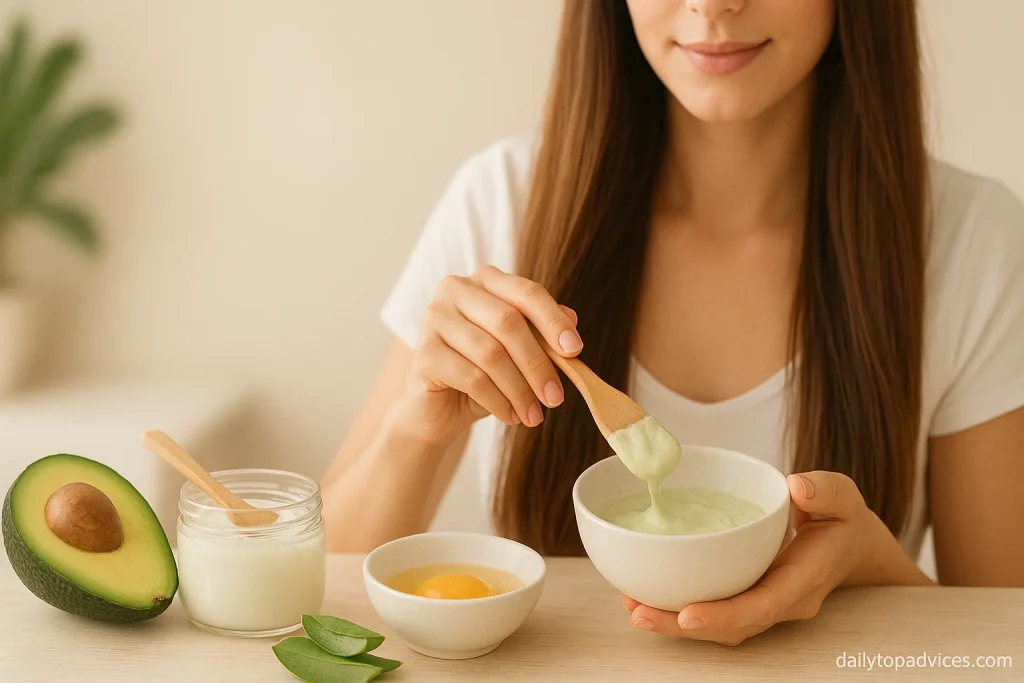
Homemade masks provide nutrients your hair craves, without expensive salon visits. Here are two effective, low-cost recipes:
1. Avocado and Olive Oil Mask – Rich in vitamins A, E, and healthy fats, avocado deeply nourishes and seals damaged ends. Mash half an avocado with a tablespoon of olive oil, apply it evenly, and leave for 25 minutes.
2. Banana and Yogurt Repair Mask – Bananas are high in silica, which promotes hair elasticity, while yogurt adds moisture. Blend one banana with 2 tablespoons of plain yogurt; apply mid-length to ends, and rinse after 20 minutes.
Using such treatments twice a month can visibly minimize roughness, giving smoother ends and improving the appearance of split hair. That’s the essence of a natural, affordable routine for how to reduce split ends without cutting.
Regular Trims vs. Preventive Maintenance
It’s important to note that while you can reduce and disguise split ends, only trimming can completely remove them once formed. However, effective prevention can extend the time between trims significantly.
Hair experts at WebMD highlight that consistent conditioning, minimal heat use, and gentle detangling can make a haircut last up to 12 weeks longer before noticeable damage returns. By combining protective steps, you can enjoy healthier-looking ends even as your hair grows longer.
That’s why “how to reduce split ends without cutting” is more than a quick fix, it’s a sustained lifestyle for hair care and self-maintenance.
Click here at Daily Top Advices to read more informational blogs.
Final Thoughts!
Caring for damaged ends doesn’t have to cost a fortune or require drastic measures. By adopting small, consistent habits, deep conditioning, gentle detangling, protective styling, and proper nutrition, you can effectively manage how to reduce split ends without cutting.
The secret is patience and prevention: nourish your hair inside and out, minimize heat and chemicals, and treat your locks like the delicate fibers they are. Over time, you’ll notice smoother, shinier, more resilient strands, without ever reaching for the scissors.
FAQs About How to Reduce Split Ends Without Cutting
1. Can split ends repair themselves?
No, once a split end forms, it cannot fuse back together. However, proper care can prevent further splitting and reduce visibility through conditioning and oiling.
2. What is the best oil for split ends?
Coconut and argan oils are widely recognized as top performers. Research shows they penetrate deeper into the hair shaft, preventing protein loss and dryness.
3. Does trimming hair make it grow faster?
Trimming doesn’t affect growth rate from the scalp, but it prevents breakage at the ends, making hair appear longer and healthier over time.
4. How often should I deep condition my hair?
Once weekly for dry or damaged hair is ideal. If your hair is fine or oily, adjust to every two weeks.
5. Can diet really affect split ends?
Yes. Nutrients such as biotin, zinc, and omega-3s play a direct role in hair strength and elasticity. Balanced nutrition reduces the likelihood of breakage.
References
- American Academy of Dermatology – Causes and prevention of hair breakage.
- Mayo Clinic – Dry hair and scalp care guidance.
- National Institutes of Health – Nutritional support for healthy hair growth.
- Journal of Cosmetic Science – Heat-induced hair damage studies.
- International Journal of Trichology – Effects of oils on hair protein loss.
- WebMD – Hair care and split-end management advice.


 English
English 